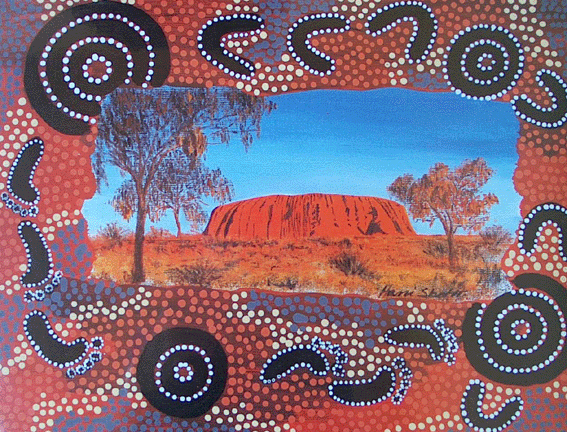Uluru is the world's largest monolith and Australia's most famous natural landmark.
Together with Kata Tjuta, the rock domes located west of Uluru, it is part of the traditional belief system of one of the oldest human societies in the world, the Australian Aboriginal.
It is situated in the Uluru-Kata Tjuta National Park , formerly called Uluru National Park, which features spectacular geological formations that dominate the vast red sandy plains of central Australia.
The Anangu Aboriginal people are the traditional owners of Uluru-Kata Tjuta
Uluru rises about 345m and depending on the time of day and weather conditions it can dramatically change colour, from purple to glowing red and mauve. These colour changes are particularly spectacular at sunrise and sunset.
It is 3.6km long, 2km wide, and is roughly oval in shape. It is made of arkosic sandstone and extends several kilometres below the surface.
Uluru is located about 335km to the south-west of Alice Springs in the Northern Territory, Australia. The Park is 132,566 hectares in size and is World Heritage listed.
Uluru is the homeland of the Pitjantjatjara and Yankunytjatjara people (also known as Anangu) and was returned to their care and ownership in 1985. The area contains carvings and paintings by Aboriginal people and is also the location of a number of sacred sites which are closed to the public.
The monolith's sandstone has weathered in places to form interesting shapes and caves.
Uluru was named "Ayers Rock" by European explorer William Gosse who sighted it in July 1873. It was named by him for the South Australian premier of the time, Sir Henry Ayers. In 1995 the name of the National Park was changed from Ayers Rock-Mount Olga National Park to Uluru-Kata Tjuta National Park to acknowledge Anangu ownership and their relationship with the area. |
 |